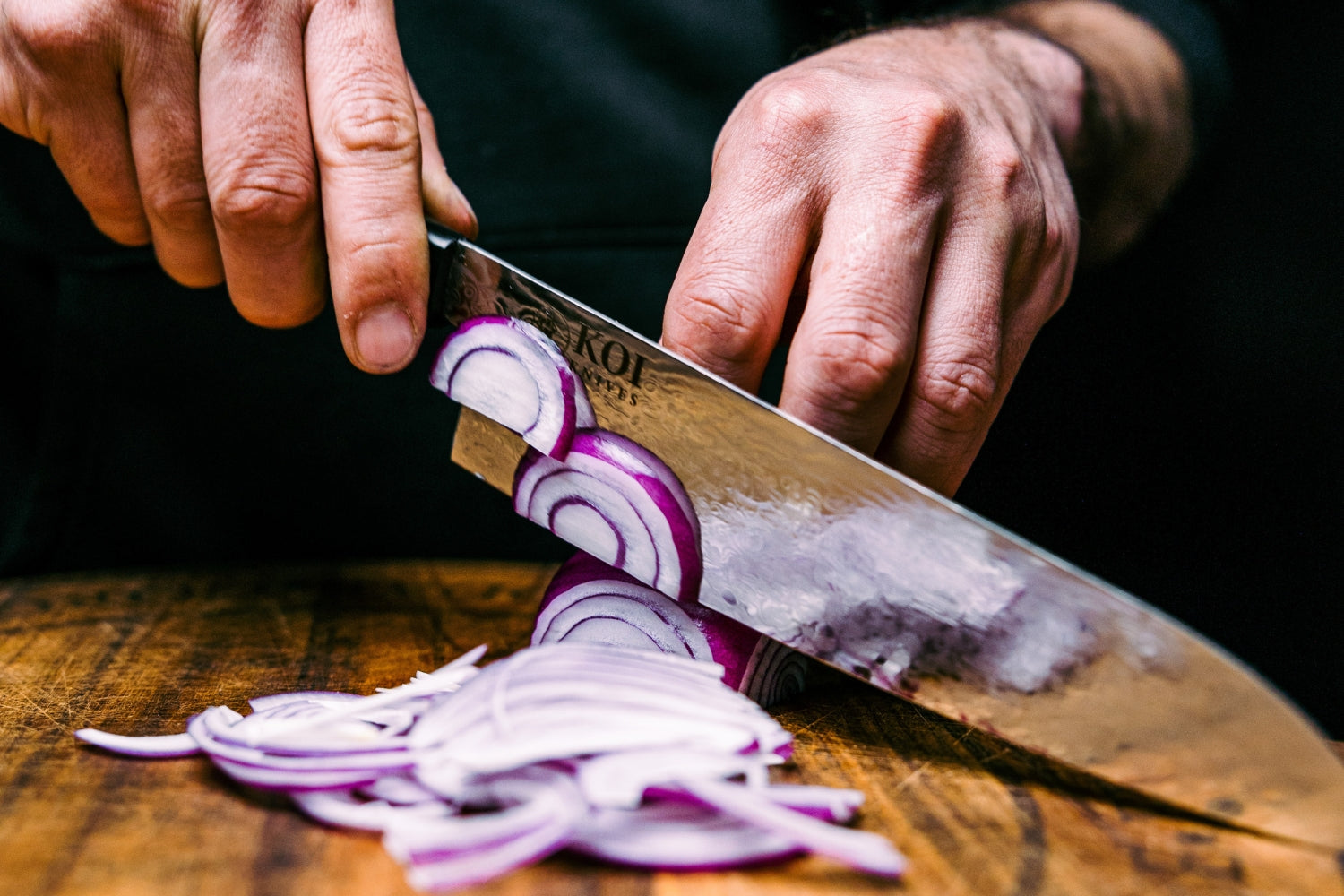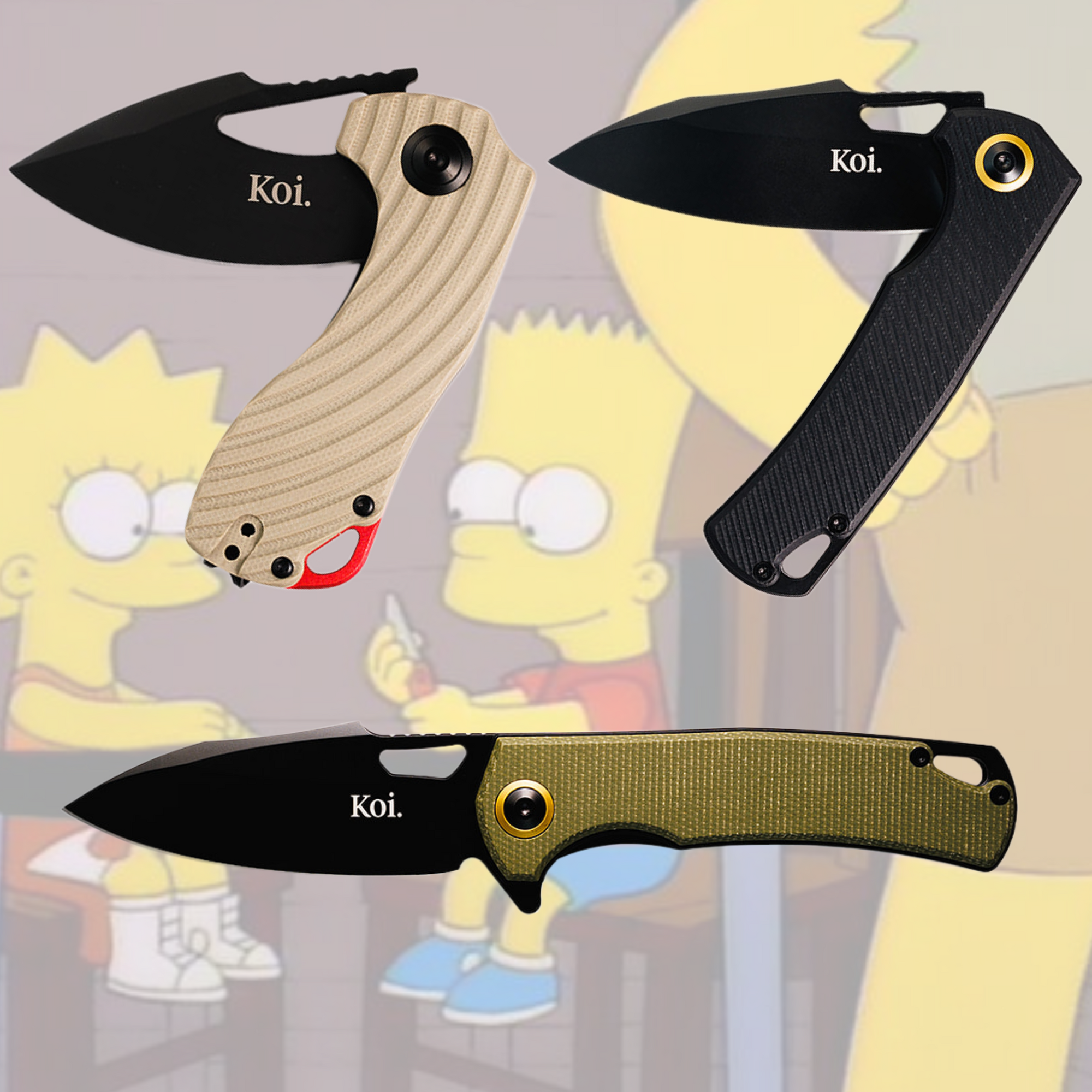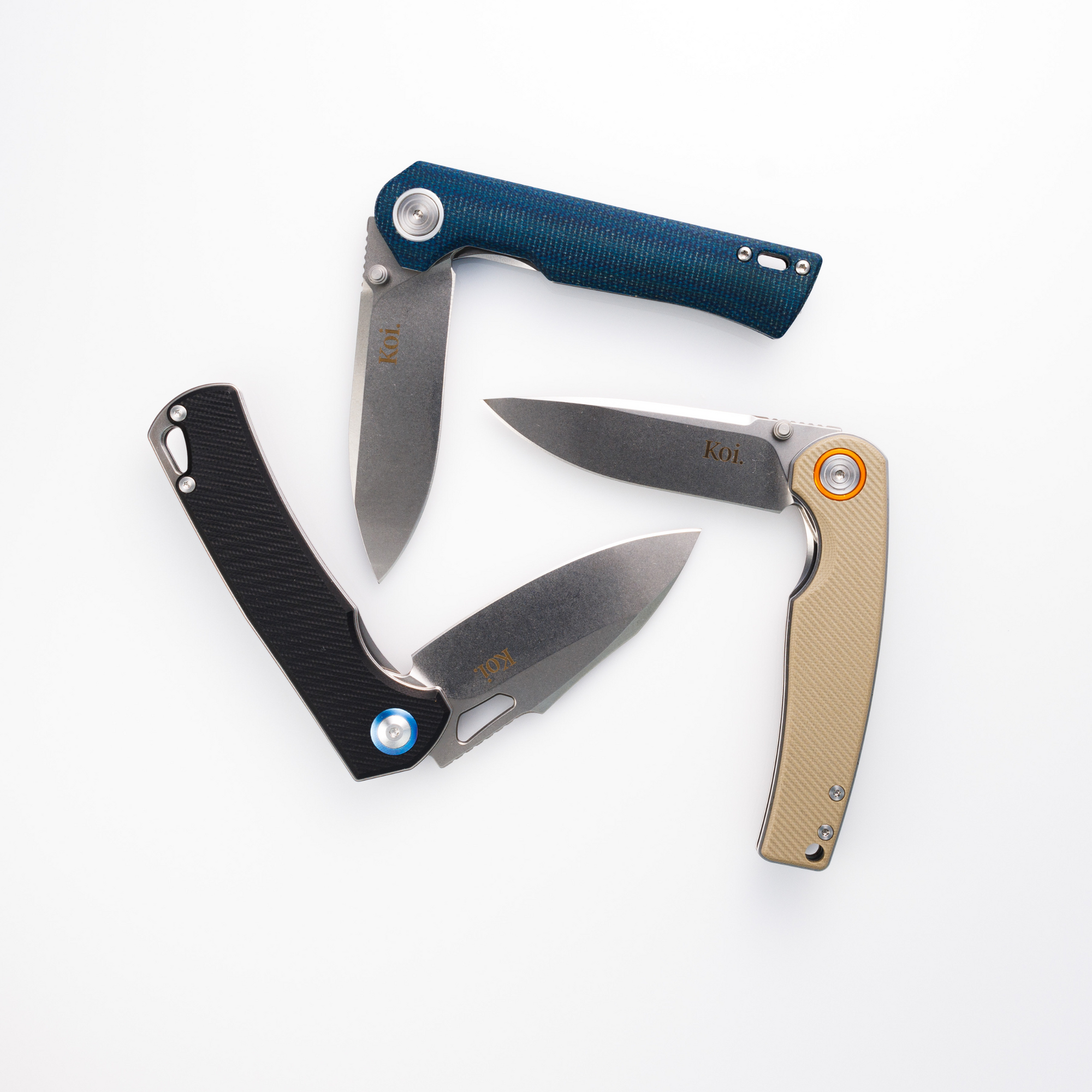Whether you’re a beginner at cooking or a virtuoso in the kitchen, you already know that cutting vegetables isn’t as easy as it sounds. It takes a lot of practice handling soft and easily breakable ingredients like them, which can be a nuisance every time you cook. In this case, you need to know the right vegetable cutting techniques from Japan, where Nakiri, the first vegetable knife, was created.
Continue reading below here at Koi Knives to know the complete Japanese vegetable cutting techniques:
1. Tanzaku kiri

One of the easiest cutting styles is tanzaku kiri (短冊切り) since you just slice your ingredients into thin rectangular strips. No specific width is required as well to do this technique.
2. Hangetsu-giri

Following closely is the hangetsu-giri (半月切り) cutting style since you simply cut your chosen ingredient to resemble half of a moon. Otherwise known as a half-moon cut, this style is often used for ingredients that are circular by nature, like a carrot or orange.
3. Kakugiri

One of the most common techniques anyone can do is the kakugiri (角切り), since you only cut your chosen ingredient to look like cubes. Due to this, it’s also known as a cube cut. Chef knives like the Santoku are the perfect knife to use for this technique.
4. Kushigatagiri

Another popular and easy style is the Kushigatagiri (くし型切り) where you cut your ingredient to look like wedges or combs. This style is known as a wedge cut due to this and it’s often used for round ingredients.
5. Butsugiri

The go-to cutting style for those who just started cooking is butsugiri (ぶつ切り) since you only slice your ingredients into large chunks between 3 to 4 centimetres. Otherwise known as a chunk cut, it’s used often in long ingredients like leek.
6. Wa-giri

When you cut an ingredient wagiri (輪切り) style, you’re simply slicing it into a circular shape. Generally, this is used for ingredients like cucumbers, carrots and more.
7. Sainome-kiri

After the kakugiri, the sainome-kiri (さいの目切り) vegetable cutting style is a more refined version of it since you simply slice any ingredient you want into smaller cubes.
8. Usugiri

When you’re preparing any ingredient by cutting them into thin slices, this technique is called usugiri (薄い切り). This can be applied to any ingredient but it’s often used for eggplants, gingers, and green onions.
9. Ran-giri

If you’re chopping your ingredients in any which way without particular shapes in mind, that’s a Japanese vegetable cutting technique known as ran-giri (乱切り) or random shaped cuts. This style is useful if you’re in a rush and want your ingredients to cook more quickly.
10. Hitokuchi-dai-ni-kiri

When you do the hitokuchi-dai-ni-kiri technique (ひと口大に切る / 一口大に切る), you’ll be cutting an ingredient into bite-sized pieces. It’s usually around 3 centimetres per side and could be used for ingredients like potatoes.
11. Koguchigiri

The koguchigiri technique (小口切り) is commonly known as small edge cuts since you cut ingredients into tiny round slices. This cutting style is often necessary when you want to use an ingredient for garnishing purposes.
12. Naname-giri

One of the most popular and easiest cutting techniques is naname-giri (斜め切り), which is otherwise known as a diagonal cut. You simply angle your knife at around 45 degrees to make oval slices of your ingredients.
13. Arare-kiri

Following kakugiri, the arare-kiri (あられ切り) cutting technique is the smaller version of it where you make sure each cube slice is around 5 millimetres.
14. Icho-giri

Commonly known as ginkgo leaf cut, the icho-giir (いちょう切り) cutting style is when you slice an ingredient to resemble a ginkgo. In short, you need to make a quarter round shape when you slice the ingredient.
15. Zaku-kiri

The zaku-kiri (ザク切り) technique is one of the easiest styles you can do since you only cut the ingredients into wide slices between 3 to 4 centimetres. This cutting technique is also known as sukiyaki vegetable cut since it’s often used for leafy vegetables that’s part of a sukiyaki dish.
16. Hyoushigi-kiri

The hyoushigi-kiri (拍子木切り) style is used for different ingredients like potatoes and daikon, where the slices look like wooden poles. It’s also known as wood clapper cuts, following the Japanese instrument.
17. Hosogiri

The hosogiri (細切り) cutting style is commonly known in Europe as Julienne. It’s an intermediate technique where you slice your ingredients into thin strips.
18. Mijingiri

When you want to prepare ingredients as a garnish, you can use the mijin-giri (みじん切り) style. It’s often known as a fine mince since you cut ingredients like an onion into small pieces.
19. Sogigiri

The sogigiri (そぎ切り) technique is when you cut a thick ingredient at an angle, parallel to the cutting board. Make sure to increase the width and angle after each cut.
20. Sengiri

The sengiri (せん切り) cutting style is a more refined version of the hosogiri, wherein you simply make sure the slices you make are thinner. This cutting style is often used to shred cabbage for a salad, side dish, and more.
21. Katsura-muki

One of the telltale signs of a skilled chef is if they can do the katsura-muki (桂むき) cutting style. It’s commonly known as rotary peel cut since you slice an ingredient in a rotation, making sure that the peeling motion remains intact.
22. Shatoo-kiri

The shatoo-kiri (シャトー切り) technique, otherwise known as a chateau cut, is used often for decorative purposes since you slice your ingredients in an oval shape, similar to a rugby. You need to make sure the ingredient is between 5 to 6 centimetres in height when you cut it, so it’s best to use a petty knife for this.
23. Ropponmuki

The ropponmuki technique (六方むき) is straightforward since you simply slice any ingredient you want to have six sides. This is why it’s also known as a hexagon cut. Generally, this style is used when you want to decorate your meal, for stew and other dishes.
24. Shiraga negi

The shiraga negi (白髪ねぎ) technique is used to cut an onion, specifically a green onion. It’s otherwise known as the white haired green onion cuts since you slice the onion into fine pieces, which is then used to garnish or decorate a dish.
25. Kazarikiri

The kazarikiri (飾り切り) is one of the most difficult and beautiful techniques you need to know since you can make anything design you want—the only limit is your imagination! Highly-skilled chefs generally show off their skills using this technique since it’s otherwise known as decorative cutting.
26. Sasagaki

The sasagaki technique (ささがき) is otherwise known as the bamboo leaf cut since you slice long ingredients into thin shavings. Ingredients like the burdock root when sliced using the sasagaki cut look like bamboo leaves afterwards.




